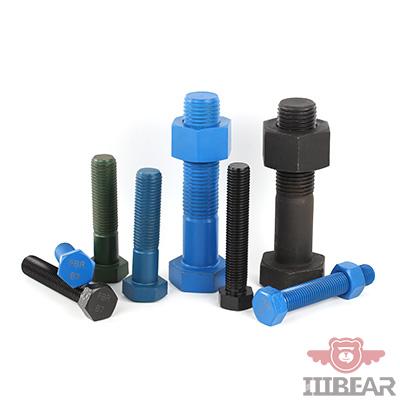Fasteners are integral components in various industries, ensuring the strength and integrity of mechanical systems. However, when exposed to harsh environments, unprotected fasteners can suffer from corrosion, wear, and degradation, ultimately leading to component failure. To address this issue, applying specialized coatings to fasteners plays a vital role in enhancing their performance, durability, and longevity. This article explores the different types of coatings used in the fastener industry, their benefits, and their application across various sectors.

1. The Importance of Fastener Coatings
Fastener coatings are essential for protecting these critical components from environmental factors like moisture, chemicals, and temperature fluctuations. Uncoated fasteners are vulnerable to corrosion, which can weaken their structural integrity over time. Coatings act as a protective barrier, increasing the fasteners' resistance to corrosion, wear, and oxidation. In industries like construction, automotive, and marine, where exposure to harsh conditions is inevitable, coated fasteners are indispensable for ensuring long-term performance and safety.
2. Common Types of Fastener Coatings
There are various coatings available to enhance the durability and corrosion resistance of fasteners, each offering distinct properties depending on the application.
-
Zinc Plating: One of the most common coatings, zinc plating provides excellent corrosion protection at a cost-effective price. It is widely used in the automotive and construction industries.
-
Galvanization: Hot-dip galvanizing involves coating the fastener with a thick layer of zinc, offering superior corrosion resistance, especially in outdoor and marine environments.
-
Phosphate Coating: Known for its anti-galling properties, phosphate coatings are ideal for fasteners used in environments with frictional stress. This coating is frequently applied to automotive and industrial fasteners.
-
PTFE Coating: PTFE (Polytetrafluoroethylene) coatings are popular for their chemical resistance and low-friction properties, making them suitable for fasteners used in chemical processing and oil & gas industries.
3. The Impact of Coatings on Fastener Performance
Coatings not only extend the lifespan of fasteners but also improve their overall performance. For instance, the reduced friction provided by PTFE coatings allows for easier assembly and disassembly of fasteners, reducing wear and tear. In corrosive environments, galvanized or zinc-plated fasteners maintain their integrity by preventing rust, ensuring the components they secure remain strong and functional over time.
The selection of the appropriate coating depends on the fastener’s application and the environmental conditions it will be exposed to. By choosing the right coating, businesses can significantly reduce maintenance costs and prevent premature equipment failures.
4. Industries Benefiting from Coated Fasteners
Numerous industries rely on coated fasteners to enhance the reliability and performance of their systems:
-
Construction: Coated fasteners are used in outdoor construction projects, protecting structural components from the elements and ensuring the longevity of the building.
-
Automotive: Automotive manufacturers use coated fasteners in various parts of vehicles, such as engines and body panels, to ensure resistance to corrosion from road salts and chemicals.
-
Marine: The marine industry demands fasteners that can withstand constant exposure to saltwater. Galvanized and PTFE-coated fasteners are commonly used in this sector to prevent rust and corrosion.
-
Renewable Energy: In wind and solar energy systems, coated fasteners are essential to maintain the integrity of the equipment, which is often exposed to extreme weather conditions.
Conclusion
Fastener coatings are crucial for ensuring that fasteners can withstand the challenges of various industrial applications. Whether combating corrosion, reducing friction, or extending product longevity, coated fasteners offer significant advantages in both performance and durability. By selecting the right coating, businesses can improve the reliability of their systems, reduce maintenance costs, and ensure safety in even the most demanding environments.

